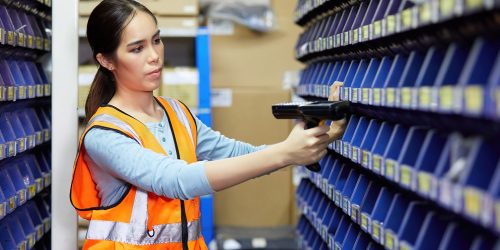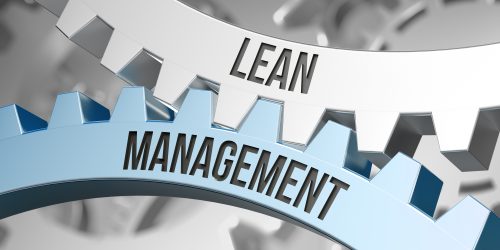Purchasing guide: Manutan EXPERT eco-friendly packaging for your business
Increasingly, throughout the world, ecological consciences are awakening. Everyone is becoming more environmentally aware, as the common goal is to preserve the planet and its natural resources. For example, using eco-friendly packaging is something that should become regular, especially for businesses. Plastic, glass, cardboard, paper, wood: what is the best choice of packaging for a more ecological behaviour? Here is our purchasing guide to help you choose your eco-friendly packaging.
What is eco-friendly packaging?
Eco-friendly packaging is recyclable. Recyclable packaging is made from a material that can be processed so that it can be used again. This type of packaging is called ‘ecological’ as it preserves the environment by transforming a material rather than starting from scratch. Using recyclable packaging is an effective way to protect natural resources, as it reduces the amount of waste and therefore the level of pollution.
How to know if your packaging is recyclable?
Products and packaging used every day are stamped with several different logos. These symbols make it possible to distinguish what is recyclable, and what is not.
What are the recycling codes?
To engage in an eco-friendly approach and make the right choices, it is essential to be informed about the meaning of the recycling codes. These are the main logos found on the products and packaging used on a daily basis.
The green dot means that the business producing the packaging or the product is a partner of the European eco-packaging scheme, the Packaging and packaging waste directive – 94/62/EC.
Called the Möbius Strip, this logo indicates that the packaging is recyclable.
The purpose of these two symbols is to inform the consumer about the percentage of recycled raw materials used in the manufacture of the packaging or the product on which they are affixed.
The purpose of this logo is educational: it simply encourages consumers to throw their waste in the bin.
This logo means that the packaging or the product should not be thrown away in a classic waste bin, but in a specific container.
This symbol is present on all recyclable packaging, as it is mandatory.
This logo informs the consumer about the composition of plastic packaging, noting the acronym of its material and its category. The number indicates the specific type of plastic used.
Intended for glass packaging, this symbol indicates that they should be recycled.
All recyclable aluminium packaging bears this logo.
These eco-labels indicate that the packaging meets the demanding criteria aimed at reducing its environmental footprint.
Which plastic material is not recyclable?
Plastic is one of the most difficult materials to recycle. The majority of packaging being plastic, it is essential to know at least their composition to choose recyclable packaging. A plastic coding system has therefore been introduced, numbered from 1 to 7.
This coding enables the characteristics and properties of different types of plastic to be identified, and to know which plastic packaging is recyclable. There are 4 families of plastic: PP (polypropylene), PET (polyethylene terephthalate), HDPE (high-density polyethylene) and LDPE (low-density polyethylene).
For example, polyethylene terephthalate, which is used for packaging of products such as soft drink bottles or oil bottles, is a category 1 plastic, 100% recyclable.
Previously not recyclable, polystyrene (PS) now is as well. An interesting development, as it is widely used.
What is the most ecological packaging?
The use of adapted ecological packaging requires a good knowledge of the manufacturing raw materials, and their capacity to be recycled.
Eco-friendly packaging and behaviour
Today, the trend is for zero waste. With this in mind, more and more food store chains are therefore offering the sale of bulk products to take away in kraft paper bags. The idea is to encourage customers to stop using plastic bags, or in the best case, to bring their own container.
At Manutan, we offer eco-friendly packaging products, since we have chosen to commit ourselves to protecting the environment. To learn more, see our purchasing guide for new eco-friendly office and warehouse products.
Which packaging pollutes the least?
The packaging that pollutes the least is the one that is the most easily recyclable or compostable, as it is biodegradable. From the perspective of sustainable development, below is a list of the most preferred ecological packaging.
Wood
Wooden packaging is the least harmful to the environment. The reason is simple: these are the types of packaging that are best recycled, and whose manufacture has the lowest environmental impact.
Glass
Glass is made from natural materials such as sand, lime and calcium carbonate. It can be recycled endlessly, and that’s its biggest advantage. On the other hand, its manufacture, transport and recycling require a significant amount of energy. The fact remains though that its reusable quality makes it an interesting eco-friendly packaging.
Metal
The advantage of metal is its ease of recycling, which requires relatively little energy. In addition, metal packaging can be reconditioned for a new use, such as a tight-head drum or a renovated open-head drum that we offer at Manutan.
Like aluminium, widely used in food packaging, it is 100% recyclable and does not lose its physico-chemical qualities. Although the electricity required for the initial production is very high, the recycling of aluminium consumes only 5% of this figure.
Plastic
Plastic has the image of being a very polluting material. However, considerable efforts have been made to enable its recycling in an efficient manner. It is therefore necessary to pay attention to the logos present on the plastic packaging to know the procedure to follow, and to adopt an eco-friendly approach. Manutan plastic packaging for shipping products, such as bubble wrap, document pouches, and also recycled storage bins are perfect examples of a better use of plastic.
Why use cardboard packaging?
Cardboard or kraft paper envelopes and packaging are mostly made from wood. They therefore have the advantage of being easy to recycle. In addition, cardboard packaging can be recycled several times. Furthermore, thanks to constant progress in recycling, soiled food boxes can now be thrown into the sorting bin reserved for cardboard packaging as they can be recycled, even when dirty. Although cardboard packaging is still a little more expensive to buy than plastic, it is still better value for money than ecological materials such as bamboo, sugar cane fibre or corn starch, which are excellent materials from an ecological point of view.
At Manutan, we offer eco-friendly quality cardboard packaging such as our single fluted cardboard boxes, our double fluted cardboard boxes, or our shockproof cardboard pallet box for the transport and shipment of various products.
Good practices for eco-friendly packaging
In addition to the choice of packaging material, certain eco-friendly practices should be adopted to limit the carbon footprint on the environment:
- Reduce the size and weight of packaging, especially for shipping, and avoid empty spaces in packaging as much as possible;
- Remove unnecessary packaging. Over-packing, intended to embellish the packaging or improve practicality, generates more waste and therefore more sorting and pollution;
- Choosing the right packaging suppliers: more and more of these are working with materials that are certified as more ecological.
It is therefore quite possible to use eco-friendly packaging and adopt practices that contribute to sustainable development without losing performance or quality. Making significant moves to favour the environment does not in any way mean that you have to renounce consumer satisfaction, and this allows you to continue your activities with peace of mind.






